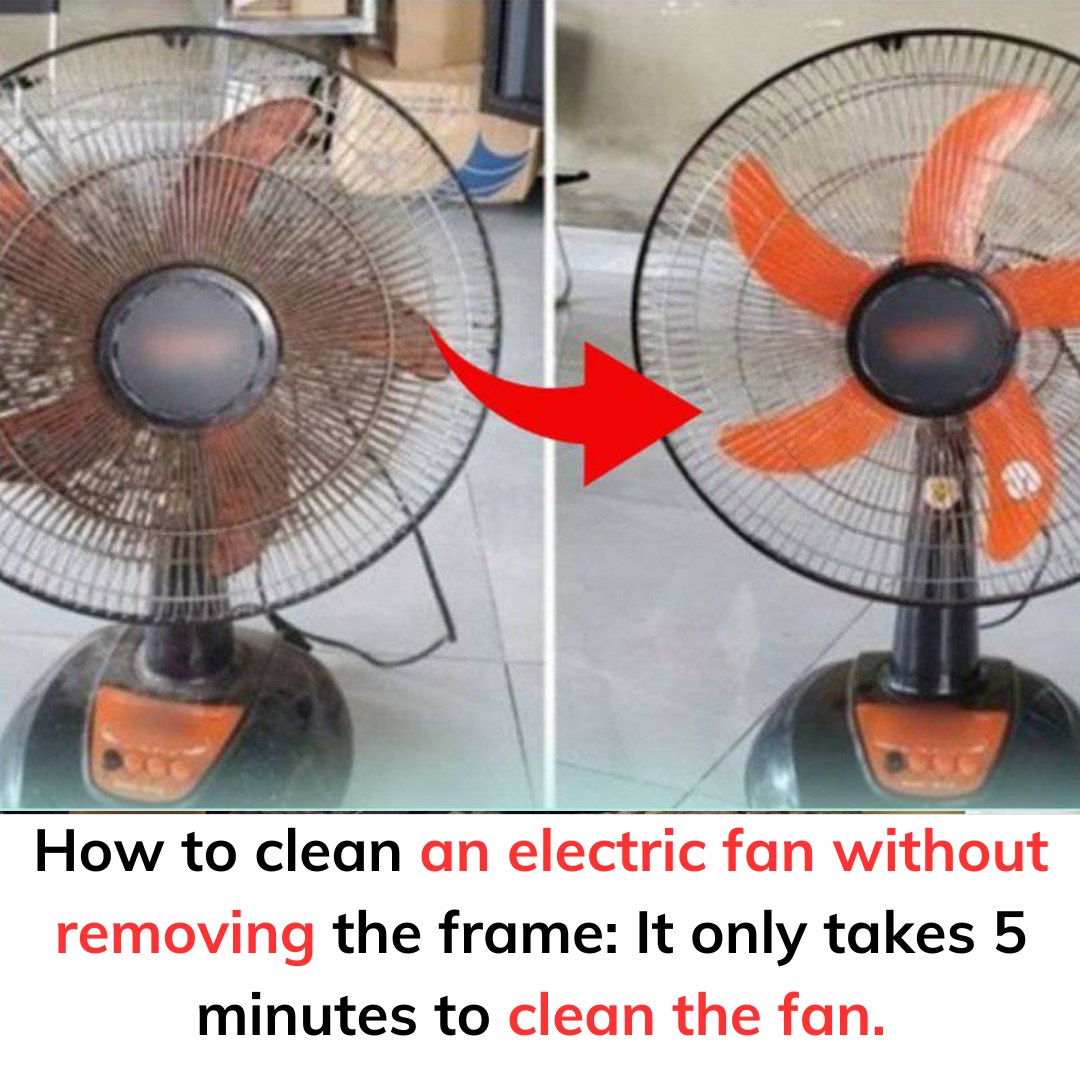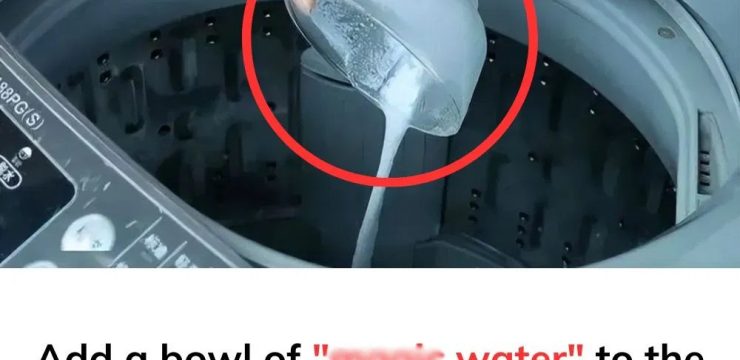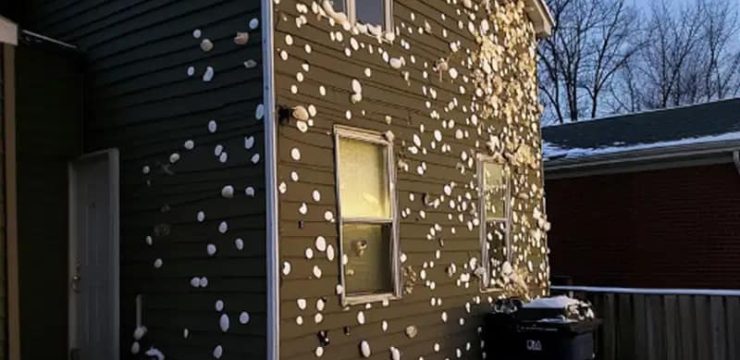Electric fans are a staple in most households, especially during hot summer months when staying cool becomes a priority. However, over time, dust and grime build up on the fan blades and grill, not only affecting the fan’s performance but also posing potential health risks. Dust blown into the air can trigger allergies, respiratory issues, and create an unsightly mess. While cleaning an electric fan might seem like a simple task, many people hesitate because the idea of disassembling and reassembling the fan feels intimidating. Fortunately, there’s a straightforward method to clean your fan effectively without taking it apart or requiring heavy scrubbing. This technique is not only easy but also highly effective, leaving your fan looking and functioning like new.

1. How to Clean Fan Blades Without Disassembling or Washing
Traditional fan cleaning methods often involve taking apart the grill, removing the blades, and scrubbing each part individually. While this approach works, it’s time-consuming and not practical for everyone. Instead, you can clean your fan thoroughly using a simple homemade cleaning solution.
What You’ll Need:
- 1 bowl
- 1 spray bottle
- 250ml water
- 2 teaspoons baking soda
- A few drops of dishwashing liquid
- 1 teaspoon white vinegar
Step 1: Prepare the Cleaning Solution
Start by adding two teaspoons of baking soda and one teaspoon of white vinegar into a bowl. Next, add two to three drops of dishwashing liquid. Use a spoon or chopstick to stir the mixture thoroughly until it becomes slightly foamy and the baking soda is fully dissolved. Pour the solution into a spray bottle for easy application.
Step 2: Spray the Fan Blades
Safety first—make sure the fan is unplugged before you start cleaning. Spray the cleaning solution generously on both sides of the fan blades, as well as on any visible dirt on the grill. The vinegar works to break down stubborn grime, while the dishwashing liquid cuts through grease and baking soda acts as a natural abrasive cleaner.
Step 3: Let It Sit
Allow the solution to sit on the fan blades for about 10 minutes. During this time, the cleaning agents will soften the accumulated dust and loosen any stubborn dirt or stains.
Step 4: Turn on the Fan
After the solution has had time to work its magic, plug the fan back in and turn it on at medium speed. The spinning motion will distribute the cleaning solution evenly across the blades and fling away loosened dirt. You may notice small specks of grime being released as the fan operates.
This simple yet effective method saves time, avoids the hassle of disassembly, and leaves your fan looking noticeably cleaner.
2. How Often Should You Clean Your Electric Fan?
The frequency of cleaning your electric fan depends largely on your living environment. In general, it’s recommended to clean your fan two to three times a year. However, this guideline can vary:
- Low-Dust Environments: If you live in a relatively clean area with minimal dust, cleaning your fan twice a year—once at the start of the hot season and once at the end—should be sufficient.
- High-Dust Environments: If your home tends to accumulate dust quickly or you notice visible dirt buildup on the fan blades, monthly cleaning during peak usage months is ideal. During colder seasons when the fan is used less frequently, cleaning every three months should suffice.
Regular cleaning prevents dust accumulation, keeps the motor running efficiently, and reduces the risk of the fan blowing allergens and particles into the air.
3. Benefits of Regular Fan Cleaning
Regular maintenance offers numerous advantages beyond aesthetics. Dust accumulation on fan blades and grills doesn’t just look bad—it also impacts performance and health. Here are some key benefits:
- Improved Air Quality: A clean fan circulates cleaner air, reducing allergens and dust particles in your home.
- Better Performance: Dust-covered blades reduce the fan’s efficiency, forcing the motor to work harder and consume more electricity.
- Longer Lifespan: Regular cleaning prevents wear and tear on internal components, extending the lifespan of your fan.
- Energy Efficiency: A clean fan runs smoothly and consumes less power, which can slightly reduce your electricity bills over time.
4. Simple Maintenance Tips for Year-Round Cleanliness
Maintaining your fan doesn’t have to be a chore. By incorporating a few simple habits into your routine, you can ensure it stays cleaner for longer:
- Dust the Fan Regularly: Use a microfiber cloth or duster to wipe the exterior and visible parts of the fan between deep cleanings.
- Cover When Not in Use: If you’re storing the fan for an extended period, cover it with a dustproof cloth or plastic cover.
- Vacuum the Grill: Use a vacuum cleaner with a brush attachment to remove surface dust without disassembly.
- Keep the Surrounding Area Clean: A dusty environment will naturally result in a dusty fan. Regularly clean floors, carpets, and nearby surfaces.
5. Why This Method Works
This no-disassembly cleaning technique is effective because it uses the natural cleaning power of baking soda, vinegar, and dish soap. Baking soda’s gentle abrasiveness lifts stubborn grime, vinegar dissolves dirt and eliminates odors, and dishwashing liquid cuts through grease and residue. Combined, they create a powerful cleaning solution that gets the job done without requiring you to take the fan apart.
Final Thoughts
Cleaning your electric fan doesn’t have to be a complicated process. With a simple homemade cleaning solution and a few easy steps, you can keep your fan blades spotless and your air fresh without the hassle of disassembling anything. This method is not only time-efficient but also incredibly effective, making it accessible to anyone, regardless of technical skills.
By maintaining your fan regularly and cleaning it as needed, you can ensure it performs efficiently, lasts longer, and contributes to a healthier home environment. Don’t wait until your fan is covered in layers of dust—take action today and enjoy cleaner, cooler air with minimal effort.





